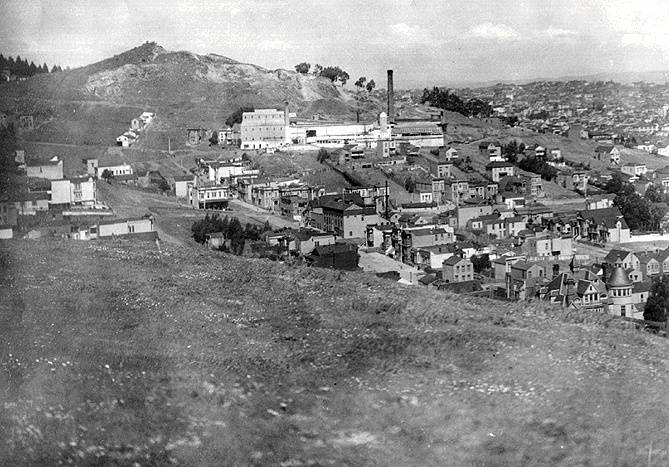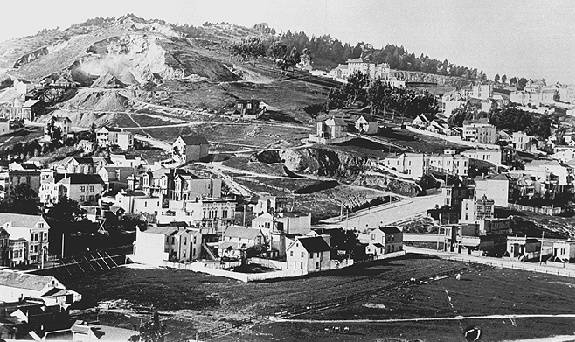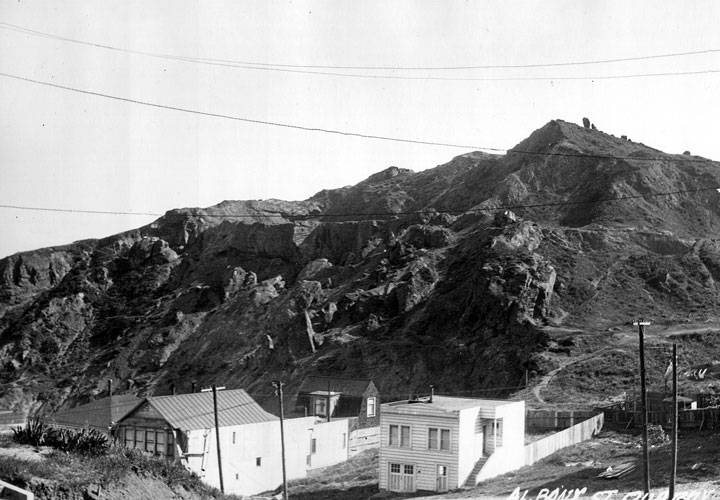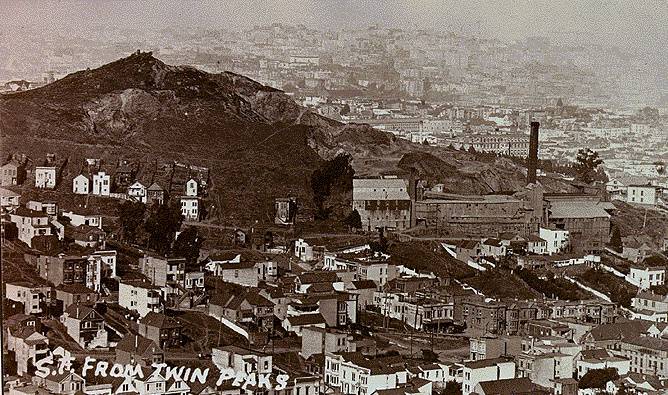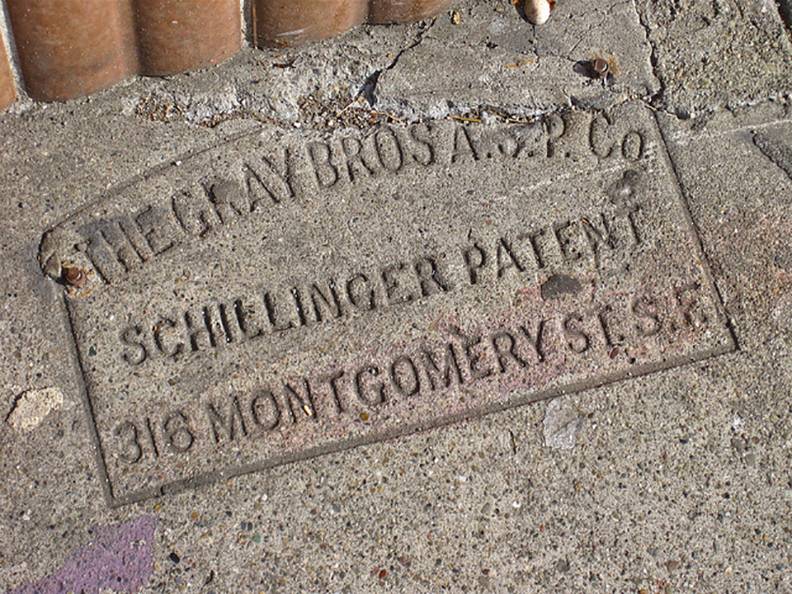Gray Brothers Quarry at Corona Heights: Difference between revisions
No edit summary |
(added new image) |
||
| (5 intermediate revisions by 3 users not shown) | |||
| Line 3: | Line 3: | ||
[[Image:castro1$corona-heights-quarry-view.jpg]] | [[Image:castro1$corona-heights-quarry-view.jpg]] | ||
''' | '''1890s View from Kite (Solari) Hill across upper Eureka Valley towards Mt. Olympus. Gray Brothers [[Corona Heights|Corona Heights]] Quarry and Brick Factory on south slope of hill.''' | ||
''Photo: | ''Photo: Private Collection, San Francisco, CA'' | ||
The Gray Brothers gained some infamy in turn of the century San Francisco, for they also operated destructive, noisy, dirty quarries on [[Saving Telegraph Hill 1890-1918| Telegraph Hill]] and at today's [[30th and Castro South|30th Street]] and Castro. | The Gray Brothers gained some infamy in turn of the century San Francisco, for they also operated destructive, noisy, dirty quarries on [[Saving Telegraph Hill 1890-1918| Telegraph Hill]] and at today's [[30th and Castro South|30th Street]] and Castro. The Gray Brothers Quarry and brick factory on [[Corona Heights|Corona Heights]] above bucolic Eureka Valley was established in the 1890s. All this territory was once part of [[Rancho San Miguel Disappears|Rancho San Miguel]]. | ||
[[Image: | [[Image:ecology1$corona-hts-quarry-1899.jpg]] | ||
''' | '''By 1899, they had removed tons of rock and produced tens of thousands of bricks, creating the blasted landscape at left (seen from the hill between Eureka and Noe Valleys just west of Dolores Park). The Gray Brothers also quarried [[Telegraph Hill Quarry |Telegraph Hill]] and [[30th and Castro South |Billy Goat Hill]] above Noe Valley.''' | ||
''Photo: Private collection, San Francisco, CA'' | |||
[[Image: | [[Image:Corona-Heights-from-north-1926.jpg]] | ||
''' | '''Corona Heights from the north, looking south, 1926.''' | ||
''Photo: Private collection, San Francisco, CA'' | |||
'''Corona Heights | [[Image:ecology1$grey-bros-corona-heights-quarry$factory_itm$brick-factory-1900.jpg]] | ||
'''The Gray Brothers Brick Factory (on the right-hand slope of the hill, center) on Corona Heights as seen from Kite (Solari) Hill in 1900''' | |||
''Photo: Private collection, San Francisco, CA'' | |||
[[Image:Gray Bros Asphalt stencil.jpg]] | |||
'''Gray Brothers stencil on 2nd Street near Minna before street renovations removed it in the early 21st century.''' | |||
''Photo: Chris Carlsson'' | ''Photo: Chris Carlsson'' | ||
[[ | [[18th and Castro 1914-5 |Prev. Document]] [[Castro St North 1901 |Next Document]] | ||
[[category:Castro]] [[category:Ecology]] [[category:1880s]] [[category:Eureka Valley]] [[category:1950s]] [[category:1960s]] [[category:2000s]] [[category:hills]] | [[category:Castro]] [[category:Ecology]] [[category:1880s]] [[category:Eureka Valley]] [[category:1950s]] [[category:1960s]] [[category:2000s]] [[category:hills]] | ||
Latest revision as of 14:36, 15 February 2023
Unfinished History
1890s View from Kite (Solari) Hill across upper Eureka Valley towards Mt. Olympus. Gray Brothers Corona Heights Quarry and Brick Factory on south slope of hill.
Photo: Private Collection, San Francisco, CA
The Gray Brothers gained some infamy in turn of the century San Francisco, for they also operated destructive, noisy, dirty quarries on Telegraph Hill and at today's 30th Street and Castro. The Gray Brothers Quarry and brick factory on Corona Heights above bucolic Eureka Valley was established in the 1890s. All this territory was once part of Rancho San Miguel.
By 1899, they had removed tons of rock and produced tens of thousands of bricks, creating the blasted landscape at left (seen from the hill between Eureka and Noe Valleys just west of Dolores Park). The Gray Brothers also quarried Telegraph Hill and Billy Goat Hill above Noe Valley.
Photo: Private collection, San Francisco, CA
Corona Heights from the north, looking south, 1926.
Photo: Private collection, San Francisco, CA
The Gray Brothers Brick Factory (on the right-hand slope of the hill, center) on Corona Heights as seen from Kite (Solari) Hill in 1900
Photo: Private collection, San Francisco, CA
Gray Brothers stencil on 2nd Street near Minna before street renovations removed it in the early 21st century.
Photo: Chris Carlsson

